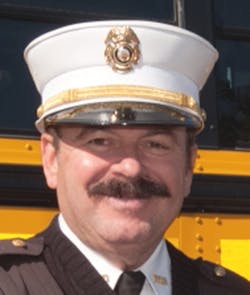The Fire Service PIO: Working with Media Deadlines
A major responsibility of public information officers (PIOs) is to know the various deadlines of the media you work with on a regular basis. If you get your information to the media after deadline, it probably won’t make it into the news.
Deadline is the time a story has to be submitted so it can either be printed or put on the air. By getting your information in before the deadline, it gives the editor or producer time to work on it without being rushed—perhaps the single most important issue to members of the media.
First, call all of the media you work with and ask for their regular deadlines for various editions or programs. They may be able to accept some stories beyond this deadline, particularly for breaking news, so ask them what their “drop-dead deadline” is as well. Drop-dead deadline means you absolutely cannot submit anything else past the established deadline and expect coverage.
Once you know the deadlines for each media outlet, determine how long it is going to take you to prepare the information for them. My minimum is to get things in no less than one hour before deadline. If I am setting something up where I expect that the media is going to do staged or taped interviews, I try to send it in at least two to three hours before deadline so they have time to write the story or edit their tapes.
For instance, let’s say your department is going to do a holiday fire safety press conference. The first issue is to figure out what day of the week and the time you want to do it. What days and time is the media available in your community? If you have a weekly newspaper, you would want to do it a few days before deadline so they have time to work on the story. For TV or radio, make it so they have a couple of hours to prepare their story. For example, for the noon or the 4 p.m. news program, aim for either 10 a.m. or 2 p.m.
After a fire, I usually prepare the media release and disseminate it within an hour after I leave the incident. When I am ready to disseminate it, I check the time to see if anyone is on deadline. For those who are close or on deadline, I will call them and advise them it is on the way. By calling them, I am sure they are aware that it is being sent to them special. Sometimes I stay on the phone while they are receiving it to make sure they do not have any questions.
If you are at a working or large incident and some of the media is on deadline, call them from the scene and give them a heads up. They may not have the time to write an entire story, but they may be able to include a small brief (paragraph or a few lines). It is the same with radio. Many times I will call them at least 10 minutes before the hour from a working incident, knowing that the next news program is on the hour, to see if they want any updated information. For this reason, it is important to make sure you have a watch or other timepiece with you so you know what time it is.
Another way to get the information out quickly is by social media. I use Twitter as my primary method and Facebook as a backup. If I am out on an incident close to deadline or news time, I will tweet some information with photos of the incident that I believe would be good for publication. I then email the photos to the news desks of each media source so they have the file to use instead of trying to download it from social media; it makes for a better picture.
Knowing deadlines is an important element in what I call “tactics and strategy” when working with the media. There are times to release information to the media and times to not release information to the media. Timing for some of your stories will be critical, and how and when you release that information could be of vital importance in some cases. Knowing the media’s deadline is critical when you plan your timing.
By knowing and working within deadlines, you will earn a lot of respect from the media in your community, along with their appreciation.

Timothy Szymanski
Timothy R. Szymanski is a Master Public Information Officer who is the fire public education & information officer for Las Vegas Fire & Rescue. He has been in the fire service for 51 years and has worked in every position from firefighter/paramedic to fire chief in his career. Szymanski also is a Master Fire Service Instructor. He was inducted into the Nevada Broadcasters Association Hall of Fame in 2017 and received the association’s Community Service Award. Szymanski also received the National Firemark Award from Liberty Mutual Insurance. He is a PIO instructor for the Nevada Department of Public Safety and was the Fire & Emergency PIO for the 1996 Summer Olympics in Atlanta.






